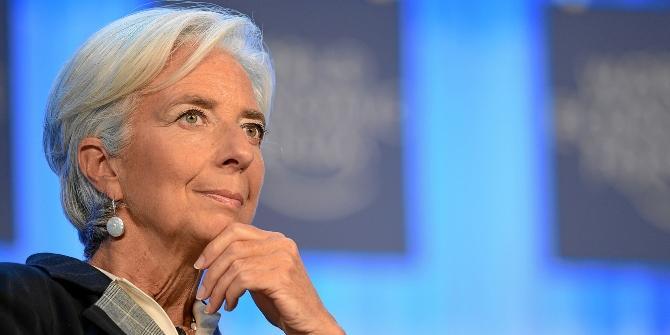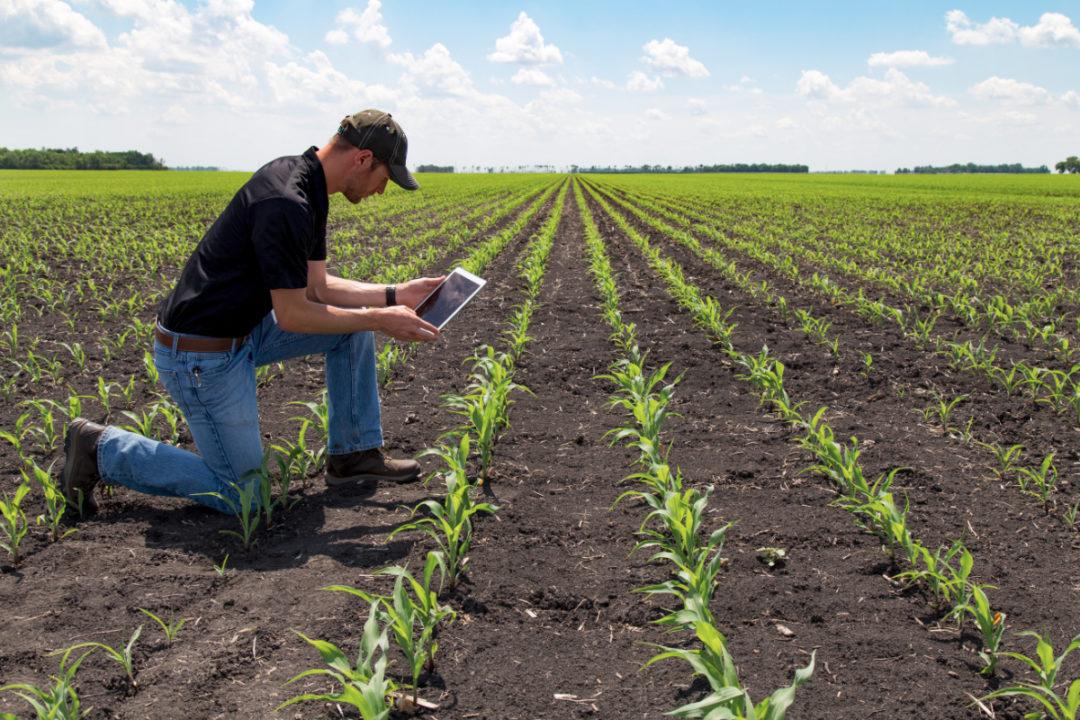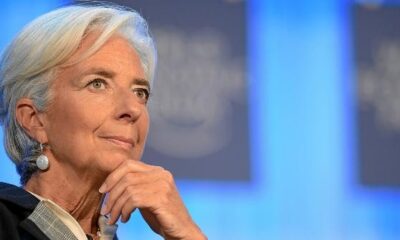Business
The Organic cotton farms revolutionising the industry

There are a number of different theories and hypotheses regarding early state formation that seek generalizations to explain why the state developed in some places but not others. Other scholars believe that generalizations are unhelpful and that each case of early state formation should be treated on its own.
Voluntary contend groups theories of people came together to form states as a result of some shared rational interest.
Conflict theories of state formation regard conflict and dominance of some population over another population as key to the formation of states.
The first states of sorts were those of early dynastic Sumer and early dynastic Egypt, which arose from the Uruk period and Predynastic Egypt respectively around approximately 3000 BCE.
Although state-forms existed before the rise of the Ancient Greek empire, the Greeks were the first people known to have explicitly formulated a political philosophy of the state, and to have rationally analyzed political institutions. Prior to this, states were described and justified in terms of religious myths.
Several important political innovations of classical antiquity came from the Greek city-states (polis) and the Roman Republic. The Greek city-states before the 4th century granted citizenship rights to their free population; in Athens these rights were combined with a directly democratic form of government that was to have a long afterlife in political thought and history.
Political globalization began in the 20th century through intergovernmental organizations and supranational unions. The League of Nations was founded after World War I, and after World War II it was replaced by the United Nations. Various international treaties have been signed through it. Regional integration has been pursued by the African Union, ASEAN, the European Union, and Mercosur. International political institutions on the international level include the International Criminal Court, the International Monetary Fund, and the World Trade Organization.
The history of the world is commonly understood as the history of humanity spanning the major geopolitical developments of about five millennia, from the first civilizations to the present. In terms such as world religion, world language, world government, and world war, the term world suggests an international or intercontinental scope without necessarily implying participation of every part of the world.
The world population is the sum of all human populations at any time; similarly, the world economy is the sum of the economies of all societies or countries, especially in the context of globalization:
- Terms such as “world championship”, “gross world product”, and “world flags” imply the sum or combination of all sovereign states.
- While the Germanic word thus reflects a mythological notion of a domain of Man compare Midgard.
- The corresponding word in Latin is mundus literally “clean, elegant” as an act of establishing order out of chaos.
Itself a loan translation of Greek cosmos “orderly arrangement.” presumably as opposed to the divine sphere on the one hand and the chthonic sphere of the underworld on the other, the Greco-Latin term expresses a notion of creation.
“World” distinguishes the entire planet or population from any particular country or region: world affairs pertain not just to one place but to the whole world, and world history is a field of history that examines events from a global (rather than a national or a regional) perspective. Earth, on the other hand, refers to the planet as a physical entity, and distinguishes it from other planets and physical objects.
Was also classically used to mean the material universe, or the cosmos: “The worlde is an apte frame of heauen and earthe, and all other natural thinges contained in them.”
The term can also be used attributively, to mean “global”, or “relating to the whole world”, forming usages such as world community or world canonical texts.
By extension, a world may refer to any planet or heavenly body, especially when it is thought of as inhabited, especially in the context of science fiction or futurology.
In philosophy, the term world has several possible meanings. In some contexts, it refers to everything that makes up reality or the physical universe. In others, it can mean have a specific ontological sense. While clarifying the concept of world has arguably always been among the basic tasks of Western philosophy, this theme appears to have been raised explicitly only at the start of the twentieth century and has been the subject of continuous debate. The question of what the world is has by no means been settled.
The traditional interpretation of Parmenides work is that he argued that the everyday perception of reality of the physical world is mistaken, and that the reality of the world is One Being: an unchanging, ungenerated, indestructible whole.
Business
The unsung hero of the 1920’s beauty industry

Of the four fundamental interactions, gravitation is the dominant at astronomical length scales. Gravity effects are cumulative; by contrast, the effects of positive and negative charges tend to cancel one another, making electromagnetism relatively insignificant on astronomical length scales. The remaining two interactions, the weak and strong nuclear forces, decline very rapidly with distance; their effects are confined mainly to sub-atomic length scales.
This diagram shows Earth location in the universe on increasingly larger scales. The images, labeled along their left edge, increase in size from left to right, then from top to bottom.
The size of the universe is somewhat difficult to define. According to the general theory of relativity, far regions of space may never interact with ours even in the lifetime of the universe due to the finite speed of light and the ongoing expansion of space. For example, radio messages sent from Earth may never reach some regions of space, even if the universe were to exist forever: space may expand faster than light can traverse it.
Because we cannot observe space beyond the edge of the observable universe, it is unknown whether the size of the universe in its totality is finite or infinite.
Spacetimes are the arenas in which all physical events take place. The basic elements of spacetimes are events. In any given spacetime, an event is defined as a unique position at a unique time. A spacetime is the union of all events in the same way that a line is the union of all of its points, formally organized into a manifold.
Spacetime events are not absolutely defined spatially and temporally but rather are known to be relative to the motion of an observer. Minkowski space approximates the universe without gravity; the pseudo-Riemannian manifolds of general relativity describe spacetime with matter and gravity.
An important parameter determining the future evolution of the universe theory is the density parameter, Omega, defined as the average matter density of the universe divided by a critical value of that density. This selects one of three possible geometries depending on whether is equal to, less than, or greater than 1. These are called, respectively, the flat, open and closed universes.
Observations, including the Cosmic Background Explorer, Wilkinson Microwave Anisotropy Probe, and Planck maps of the CMB, suggest that the universe is infinite in extent with a finite age, as described by the Friedmann–Lemaître–Robertson–Walker (FLRW) models.
Because we cannot observe space beyond the edge of the observable universe, it is unknown whether the size of the universe in its totality is finite or infinite.
The universe is composed almost completely of dark energy, dark matter, and ordinary matter. Other contents are electromagnetic radiation (estimated to constitute from 0.005% to close to 0.01% of the total mass-energy of the universe) and antimatter.
The observable universe is isotropic on scales significantly larger than superclusters, meaning that the statistical properties of the universe are the same in all directions as observed from Earth. The universe is bathed in highly isotropic microwave radiation that corresponds to a thermal equilibrium blackbody spectrum of roughly 2.72548 kelvins.
Two proposed forms for dark energy are the cosmological constant, a constant energy density filling space homogeneously, and scalar fields such as quintessence or moduli, dynamic quantities whose energy density can vary in time and space. Contributions from scalar fields that are constant in space are usually also included in the cosmological constant. The cosmological constant can be formulated to be equivalent to vacuum energy. Scalar fields having only a slight amount of spatial inhomogeneity would be difficult to distinguish from a cosmological constant.
Ordinary matter commonly exists in four states: solid, liquid, gas, and plasma. However, advances in experimental techniques have revealed other previously theoretical phases, such as Bose–Einstein condensates and fermionic condensates.
A photon is the quantum of light and all other forms of electromagnetic radiation. It is the force carrier for the electromagnetic force, even when static via virtual photons. The effects of this force are easily observable at the microscopic and at the macroscopic level because the photon has zero rest mass; this allows long distance interactions. Like all elementary particles, photons are currently best explained by quantum mechanics and exhibit wave–particle duality, exhibiting properties of waves and of particles.
With the assumption of the cosmological principle that the universe is homogeneous and isotropic everywhere, a specific solution of the field equations that describes the universe is the metric tensor called the metric,
Some speculative theories have proposed that our universe is but one of a set of disconnected universes, collectively denoted as the multiverse, challenging or enhancing more limited definitions of the universe. Scientific multiverse models are distinct from concepts such as alternate planes of consciousness and simulated reality.
The Indian philosopher Kanada, founder of the Vaisheshika school, developed a notion of atomism and proposed that light and heat were varieties of the same substance.
Business
Christine Lagarde in favors of a policy to support the economy

We should not expect an economic revolution in the coming months at the European Central Bank. Christine Lagarde, its future president, spoke out in favor of maintaining the current monetary policy of supporting the euro area economy conducted by the institute for the “foreseeable future”. “It is clear that monetary policy needs to remain very accommodative for the foreseeable future,” she said in written responses to the European Parliament published on Thursday as part of the validation procedure for her appointment, adding that the ECB had not yet reached the “floor” of its interest rate policy.
While the measures taken by the Governing Council of the Institute, currently chaired by the Italian Mario Draghi, have at this stage removed the specter of deflation and supported growth and employment, “inflation (has) remained consistently below the ECB’s inflation target” in recent years, which is close to 2%, the current Managing Director of the IMF stresses. Also, “the economic expansion of the euro zone has slowed recently and growth prospects are declining”, she adds to justify the need for support measures. This is due to uncertainties related to geopolitical factors, protectionist pressures, and emerging market vulnerabilities,” she said.
Reassure Germany
In terms of the answer to be given, “I do not think the ECB has reached the bottom” of its interest rate policy, she considers, although it seems clear to her that “low rates have implications for the banking sector and financial stability in general”. This is a way of trying to reassure Germany and its banking sector, which regularly complains about the ECB’s very low-interest-rate policy, which in its view is responsible for heavy losses for savers. Critics in Germany of the ECB’s expansionary policy consider that it is mainly aimed at supporting countries in southern Europe in difficulty, such as Italy, but is not adapted to a country like Germany.
At the next meeting of the Frankfurt Institute on 12 September, the custodians of the euro could adopt a package of measures including a reduction in the deposit rate, with a mechanism to mitigate its impact on bank profitability, and a relaunch of the debt buyback program, which was shelved at the end of 2018. Christine Lagarde also expects Brexit to have a “limited impact” on access to financial sector services in the euro zone. According to her, the time ahead before November 1, the foreseeable date of Brexit, should “be used by financial and non-financial companies to continue to prepare for all possible contingencies”.
Business
Not to miss the vizcachazo

The new government has a great opportunity in agribusiness. Perhaps the only one. Alberto Fernandez’s economic references have not spoken much in recent days, but two of the most prominent (Guillermo Nielsen and Matías Kulfas) stressed more than once that the priority is to export. And there is a clear leadership of agro-industrial products, which account for more than 60% of the foreign exchange that enters the country.
Based on this, a score of entities representing the main chains, chambers, and guilds in the sector yesterday elevated the president-elect a request to consider elevating the Ministry back to the category of “Agroindustry”. Even though the major decisions with impact on the sector will depend primarily on the portfolio of Economy (or Treasury), having a Ministry of Agroindustry would generate a confidence shock both internally and externally. The world also knows and trusts that with the power of the agro-industrial sector, Argentina should have no trouble getting out of the current impasse.
The tailwind from 2007 to 2009 is gone. The “commodities supercycle” went down in history with more sorrow than glory. The worst legacy was the crack. But he also became aware that it is in everyone’s interest for agriculture to move forward. There are markets, starting with the insatiable protein appetite of the People’s Republic of China, which has become the great vacuum cleaner for soya but now also for all kinds of meat. Three years ago we dreamed of exporting a billion dollars. This year we are going to close with more than 3 thousand, and growing.
In the ranking of foreign currency, income is the first soybean, with three times the second, which is the automotive (although with a negative internal balance, because it imports more than it exports). Maize is almost tied, and then beef. Then, wheat. And then peanuts, barley, wines, legumes, traditional and new pome fruits such as blueberries and cherries. More than a hundred countries around the world receive these products, and when Argentina goes to market, competitors tremble.
Hopefully, Alberto Fernandez will choose a minister of agribusiness who shares this vision. Someone will say, as is sometimes heard, that this sector alone is “not enough”. It is not a reason to punish him, not even to let him go. Rather, we should analyze why so much competitiveness was achieved and replicate the path in all segments of the economy.
And there’s more thread on the reel. The issue of climate change was installed as the main environmental challenge. Global agriculture is in focus. But here a sustainable production model has been developed, which differs precisely because of its low level of greenhouse gas emissions. The world is watching. On Monday, a “Carbon Neutral” initiative is launched at the Buenos Aires Grain Exchange, with the support of all cereal exchanges and inland trade. The objective is to prepare the bases for the emerging market of “green bonds”, financial derivatives of enormous potential.
In fact, the Minister of Agriculture of Brazil, Tereza Cristina, signed last Thursday in New York a memorandum of understanding with the CBI (Climate Bonds Initiative) for the development of the market for green securities in the Brazilian agricultural sector. It seeks to stimulate new sources of financing for the Brazilian agroindustry, promoting sustainable practices and technologies. He spoke of a target of 169 billion dollars and has already started with a sugar mill that obtained 50 million dollars to expand its ethanol production.
-

 Companies1 month ago
Companies1 month ago“Volks-Sparkasse”: Joint branches in response to savings pressure
-

 Business1 month ago
Business1 month agoIndustrial workers improve work processes
-

 Business1 month ago
Business1 month agoRoad closures causing havoc to commuters
-

 Business1 month ago
Business1 month agoThe English millionaire who made history with a marathoner
-

 Business1 month ago
Business1 month agoNot to miss the vizcachazo
-

 Business1 month ago
Business1 month agoThe unsung hero of the 1920’s beauty industry
-

 Business1 month ago
Business1 month agoTo not be poor a family needs $ 34,784, 54.2% more than a year ago
-

 Business1 month ago
Business1 month agoChristine Lagarde in favors of a policy to support the economy

